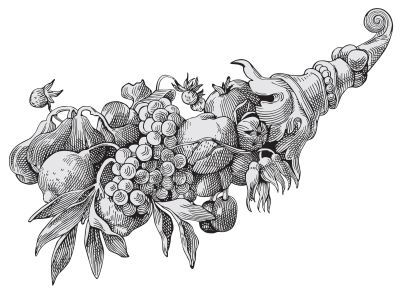About
Welcome to Cornucopia Food Forest Gardens- growing an ecosystem of abundance
Cornucopia Food Forest Gardens provide a continual abundance of beauty, nourishment, healing, fertility, and fun! while functioning as an ecosystem- taking care of the Earth and the People. It is a service by John Valenzuela.
John Valenzuela
-is a horticulturist, consultant and educator who has returned to live in Northern California after being based in Hawai’i for 15 years.
First introduced to the sustainable design theories and methods of permaculture in 1989, John studied and practiced tropical permaculture and taught extensively in the Hawaiian Islands. He has been a lead permaculture design course instructor at the Bullock Family Homestead in Orcas Island, Washington for over 15 years, and also has experience teaching in Costa Rica and now throughout urban and rural California, collaborating with leading permaculture organizations (see the Collaborative Community page on this site)
His special interests are rare fruit, home gardening, trees, traditional agriculture, plant propagation, and ethnobotany. He is active in the Golden Gate chapter of the California Rare Fruit Growers where he has been Annual Scion Exchange coordinator, and served as Chapter Chairperson. John is a regular volunteer at the Indian Valley Organic Farm and Garden, College of Marin in Novato, where he works and advises in the orchard and coordinates fruit tree propagation in the nursery.
He now lives and grows in North Eastern Marin County California, where he is diversifying a food forest garden with over 150 varieties of fruit on multi-grafted trees, along with a small nursery, while practicing photography, developing educational materials, freelance consulting, team teaching, planting and maintaining gardens. He specializes in the care of fruit trees, especially pruning and grafting.
John is known for an engaging enthusiasm that matches his depth of plant knowledge.
More on Food Forests:
Food Forests- growing an ecosystem of abundance, by John Valenzuela
Also known as ‘Door Yard Garden’, ‘Mixed Garden’, Huerta Casero, and
Kampong, ‘Food Forest’ is an term coined by Englishman Robert Hart to
describe the intensive food, medicine, craft, and ornamental gardens of
trees, shrubs, herbs and annuals that surround homes in Kerala India,
Meso-America, Indonesia, and many other cultures. He recreated this,
with appropriately selected species, at his own home in a cool Northern
European maritime climate. The archetypical food forests found in the
rainy and sun soaked tropical climates can encourage a very dense spacing
of plants, this density may not be appropriate for all climates. For the more
limited water and lower sun angle found in a Mediterranean climate,
plants could be placed farther apart as found in the Mission Gardens of
old California.
Of course the original food forests in this area of California are the native oak savanah, and oak, madrone, and bay laurel woodlands, with edgy understories consisting of sunny patches of berries, green herbs and edible bulb crops adapted to California’s varied ecosystems, which were sustainably managed by local indigenous tribal cultures for thousands of years.
With the Spanish missionaries came the ‘biblical trees’
common to Southern Europe, North Africa, the Middle east, and beyond:
olives, figs, grapes, pomegranates, citrus and date palms, along with deciduous
fruit like apples pears, peaches plums, apricots, cherries. Also many
fruits from Mexico and Central and South America were brought by the
missionaries, including avocado, white sapote, bananas, capulin cherry,
guava, and papaya, among others.
Later immigrants from the Eastern, and Mid-Western US, Europe, Asia,
Africa, and the Americas, brought increasing numbers of varieties and species.
It was common in many communities to find mixed gardens of nuts, fruits,
herbs, flowers and vegetables. Especially in neighborhoods with smaller yards,
there was no choice but to have all their favorite plants all growing very
closely together. Later, industrial economies put people to work in factories
so they could buy produce from farmers, but they began to neglect their own
gardens. Yet perennial food gardens such as food forests persist even when
abandoned or forgotten, ready to provide when another generation is ready
to tend and harvest. Tending a garden is something very basic to much of
humanity. Even with all of our modern distractions, home gardening is still
one of the most popular activities in the US.
The physical structure of the food forest imitates a wild forest, with many
layers of vegetation, from tall canopy trees to smaller trees, shrubs, herbs,
ground covers, root crops, fungi, and climbing vines. In addition, many of the
forest ecosystem functions are replicated in a food forest: including enhancing
the resources of water, fertility, and beneficial habitat. Basins are used to allow
water infiltration for `zero runoff’, and recycled water is used from rooftop
rain catchment and gray water sources. Mulch and compost crops contribute
to the soil fertility cycles. Various habitats for beneficial creatures are enhanced
in the food forest, providing pollen and nectar for pest predator and
pollinator habitat, in addition to shelter for other pest predators including
amphibians, reptiles, chickens, ducks, raptors and even bats. Human
needs the food forest provides for feature a continuous year ’round harvest
of a nutritionally diverse diet, culinary herbs, medicinal herbs, fragrant and
colorful flowers, lumber, fuel, fiber, dye and other useful materials for craft.
Food forests are really nothing new, some version of them are still to
be found in our very own neighborhoods today, many originally planted generations
ago. We are reviving this tradition with new plantings of diverse,
productive and resilient ecosystems providing a backyard cornucopia in
these uncertain times.
-JV


